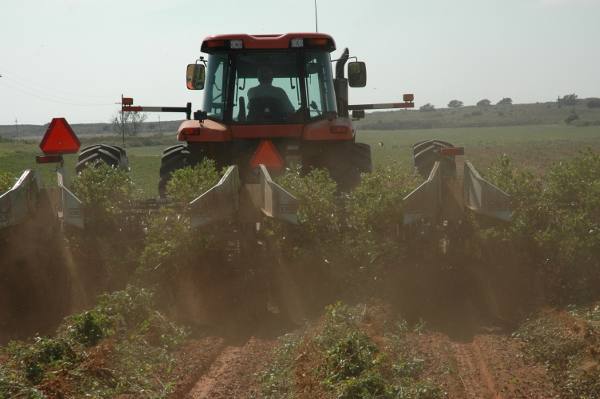
High plains farmers face a lot of “what if’s” this week as they evaluate effects of the Monday morning freeze. Best advice, according to Kerry Siders, Texas AgriLife Extension integrated pest management specialist for Hockley and Cochran Counties, is to be ready to begin harvest or salvage activities.
Damage, he said, depends on the crop, level of maturation and the condition of the crop at the time of the freeze.
“Levelland achieved 30 to degrees from 2 a.m. until 7 a.m. the morning of October 8,” Siders said. “Varied temperature reports have come in today from surrounding areas, so most everyone had their first freeze and frost. Many have called in asking what this has done to their crops. My first inclination is to say we do not really know yet. However, I know that does not help matters in scheduling spraying activities or digging peanuts.
“First, let me say that the maturation process for all crops has slowed to a snail’s pace if not ceased completely.” Maturity level depends on exposure to cold and could be quite different in a completely exposed, green sorghum head versus a cotton boll that’s in the middle of the plant and protected with intact foliage.
“So let’s start with sorghum. My thoughts are if the sorghum kernels were still soft dough and not developing hard starch yet, this (freeze) could be a problem. However, if the kernels were developing hard starch, I think the worst case is you lose some bushel weight.”
He says peanut farmers wanted another week or longer to finish out the last pods set. “But again, the maturation of these pods is so slow at this time I’m not sure it’s worth the wait. If the plant went into freeze relatively healthy, it will obviously hold up longer until plants can be dug.
“However, if plant health was compromised anyway prior to the freeze, I would recommend getting in the field and digging. As time passes from the point of the freeze, the limbs and pegs begin to deteriorate. If they deteriorate too much, pods easily detach and harvest losses can be considerable.”
Siders said cotton could be more complicated.
“On dryland acres, let the crop run its course, unless you have good yield potential and you were prepared to spray. Freeze damage on cotton can be inconsistent within a field and especially from field to field.
“Boll opening is the most critical factor at this point,” he said. “Ethephon must come into contact with the boll for it to work properly, and the boll must have some degree of green tissue. In other words, if the freeze caused a boll near the top to completely turn black, that boll will not be subject to opening from ethephon. The boll may or may not open with time, and if it does open it may have some ruined locks.”
He recommends evaluating fields. “If a potentially good-yielding field appears to have significant freeze damage, I would spray sooner than later—before too much drying has occurred, so possibly the ethephon will enhance opening. On the other hand, over the next 3 to 5 days, I would watch fields with foliage intact and bolls protected from freeze to see how the plants respond to the weather this week.
“Most likely, you will benefit from the freeze, which simply removed some leaf and made a harvest aid application more effective.”
No doubt, Siders said, farmers face many “what ifs and scenarios that could play out here.”
About the Author(s)
You May Also Like






